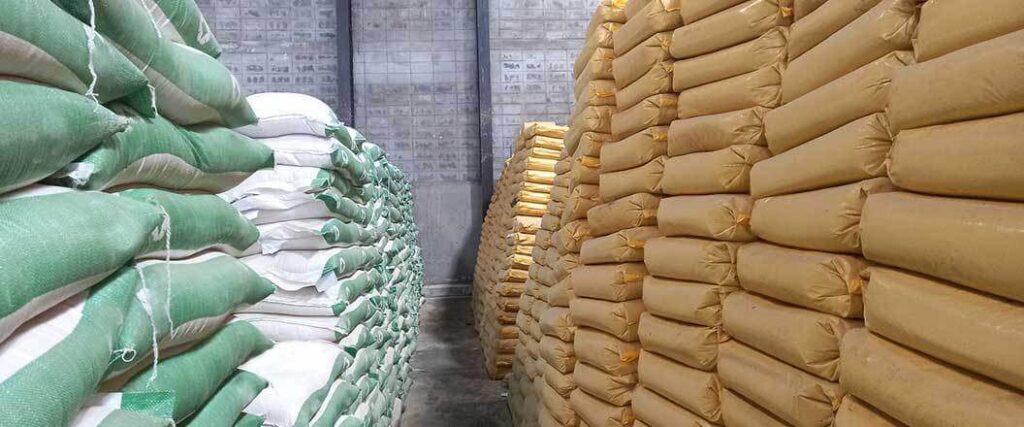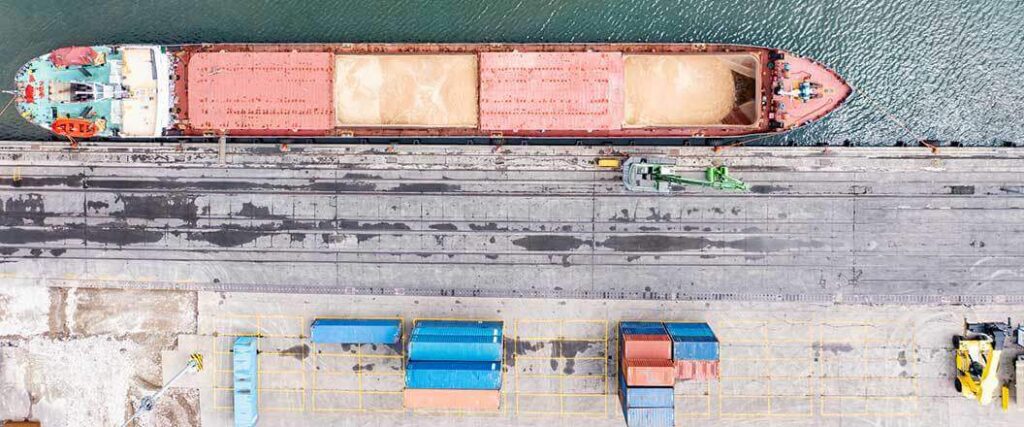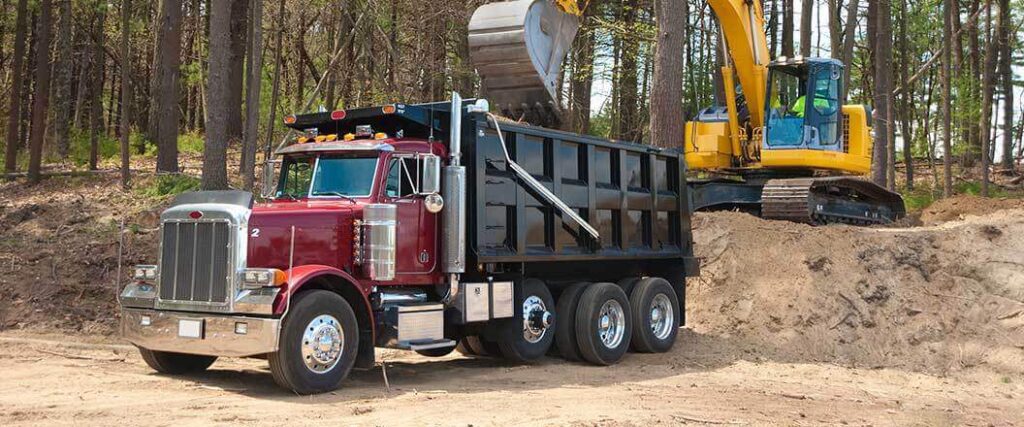Sand transloading services are a necessary part of the industry whether you need to make glass, start a garden or regenerate land, These services allow you to change the mode of transportation for your sand shipments. Since sand is a material in high demand and has many applications like the one above, transloading can be a useful service.
Transloading sand often involves transporting the material either loose or bagged and using a combination of dump truck, covered hopper car, or barge. Some of the most common types of sand shipped across the country include mason sand, septic sand, washed sand and paver sand.
Throughout this article, we’ll explain the benefits of each of these sand transloading services in detail.

What Types of Sand Can be Transloaded?
As we stated before, sand is a material that is high in demand and will continue to be for the foreseeable future. The material is the second most-consumed raw material. Because it’s used for so many different purposes, sand is shipped to various destinations where it’s needed.
Some popular types of sand are:
- Mason Sand: This type of sand is often used for the construction of recreational sites. These can include volleyball courts, underneath a swimming pool and horse arenas.
- Septic Sand: Sewage mounds and septic systems use this type of sand for filtration. This purifies the water of septic systems and sewage mounds so that it can safely return to the ground.
- Washed Sand: Sand that is “washed” has had its clay, silt and dust removed from it. Afterward, it’s used for mixing concrete and brick laying.
- Gunite/Paver Sand: This form of sand is used for the actual construction of swimming pools.
How much sand costs can vary based on what type you need and the amount. The table below gives some estimates for different types of sand. Because dump trucks can carry around 10 cubic yards, we’ll show you the price range of these types of sand between one and 10 cubic yards.
Estimated Cost of Shipping Sand
| Type Of Sand | Cost |
| Mason Sand | $65-$650 |
| Septic Sand | $60-$600 |
| Washed Sand | $40-$450 |
| Gunite/Paver Sand | $80-$800 |
Since there are so many different types of sand that need to be shipped to different locations, shippers often take advantage of transload services to improve the shipping process.

What Is Sand Transported In?
Sand is transported using a variety of different transportation methods. Understanding the benefits and drawbacks of these transportation methods will help you to better determine when to use transloading services.
Dump Trucks, Pneumatic and Dry Van Trailers
When it comes to shipping sand by truck, a few different methods are used. The most common truck that is utilized to transport sand is a dump truck. Dump trucks can carry about 10 cubic yards worth of sand, making them an excellent option for bulk shipments.
Another popular option is the use of pneumatic trailers. Soda ash is often transported using this type of trailer, but it works well for sand and other dry bulk materials. Lastly, if sand is being transported within the confines of bags that have been palletized, dry van trailers are the next option.
Truck shipping is beneficial because it reaches destinations that other modes of transportation cannot. The downside of truck shipping is that it’s not fuel-efficient, and as a result, is the most expensive shipping method.
Therefore, if you want to use transloading for a long-distance shipment, start the shipment with a barge or rail as your mode of transport. Once the barge or rail reaches a transload facility close to the final destination, a truck can complete the rest of the journey.
Barges
If you ever have the opportunity to take advantage of inland waterways for your shipping needs, then barge shipping is the way to go. Barges are often used to hold dry bulk products, similar to how pneumatic trailers do. These specialized boats are excellent at transporting bulk shipments to their destination. For example, barges can hold between 8,000 and 9,000 tons of sand.
Of all the modes of transportation, the barge is by far the most fuel-efficient mode of transportation. Barges can sail 514 miles while carrying one ton before they burn a gallon of fuel. The downside of barge shipping is that it’s extremely slow compared to truck and rail shipping. A barge travels so slowly that it’s not uncommon for shipments to take two or three weeks.
Barge shipping is a good long-distance shipping method when you’re not constrained by due dates. That said, once the barge carrying your shipment arrives at a port, it’ll have to be transloaded onto either a train or truck for the next part of the shipment.
Rail
The next mode of transportation that you can use for your sand shipment is rail. This form of shipping, like barge shipping, allows you to move large quantities of sand over longer distances. Covered hopper cars are the rail car of choice when being shipped by rail. However, when sand is bagged and palletized, standard box cars are the rail cars that are used.
Rail shipping is not quite as fast as truck shipping, but not nearly as long as barge shipping. Using rail shipping also provides a long-distance transportation method that’s cheaper than truck shipping. That said, rail shipments will have to be moved onto a truck once they arrive at a transload facility.
Soda ash is another granular product that is transported similarly to sand. Check out our article on transloading soda ash for more details.


How Transloading Your Sand Shipment Will Help You
We’ve talked about the modes of transport and when to transload from one form to another. The next part about transloading sand that you should know, is how sand transloading services will be able to help you.
These benefits include:
- Cost savings
- Time savings
- The ability to consolidate shipments
- The ability to fix rejected shipments
- Great for long-distance shipments
Saves Money
Sand transloading services can help you save the amount of money you spend on a shipment. The material itself is expensive to purchase. Sand is used so often that it has become more and more scarce over time. As sand becomes more scarce, the price for it will continue to climb. On top of that, shipping sand exclusively by truck is expensive.
Transloading helps bring your overall cost down when it comes to shipping. You will still have to pay for the sand you want, but you can reduce the amount of time you have to use a truck for your shipment’s journey with transloading.
Another way that transloading can help you save money is by cutting out storage costs. Transloading services keep storage time to a minimum. Freight that has been unloaded from one method of transport only has to wait a short period before being loaded onto another mode of transport, if it has to wait at all.
Saves Time
Since you won’t have to worry about storage time when you use transloading services, your shipments of sand will be moving faster. Another factor to consider is that you won’t be using a distribution center when you transload.
While sand can’t be dumped from a truck in the middle of a distribution center, palletized shipments can be dropped off there. With transloading, you won’t have to send a palletized shipment to a distribution center only for it to be loaded on another truck for delivery.
Consolidates Shipments
Consolidating sand shipments is difficult to do when carried in pneumatic trailers or dump trucks. Fortunately, palletized bags of sand can be more easily transloaded when needed. If you have two trucks that are transporting your sand shipment, consider consolidating them into one trailer so you won’t have to pay more money to complete two separate shipments.
Fixes Rejected Shipments
If you’re shipping your own bags of palletized sand to a distributor like Lowe’s or Walmart, you’re going to need to make sure that you follow their pallet requirements. That said, accidents can always happen on the road.
Pallets can fall over or even break for any number of reasons. When this happens, sand transloading services are a great way to fix this problem. You can find yourself a 3PL transload facility that will unload your rejected shipment and load it back into a trailer correctly. Afterward, you can redeliver the palletized bags of sand to the original destination.
Great For Long Distance Shipments
Short-distance shipping won’t require multiple modes of transport. Using a truck to move your goods will be enough. However, for shipments that travel over long distances, changing your mode of transport might be needed. Transloading helps you adapt to these distances by using the most viable mode of transport for certain parts of the journey.
We’ve discussed transloading sand, but you can also look into transshipment options as well. Read our article on transshipment and transloading to know the difference between these two.
Use Transload Services USA To Handle Your Sand Shipments
At Transload Services USA, you can reap the benefits of transloading your shipments of sand. Whether you’re sending off bags of palletized sand or you have a barge worth coming into a port, we can give you the help and advice you require. Fill out your free quote today and experience the benefits of transloading.
Our full suite of services includes:
If you need any further assistance, contact us at (352) 282-4588.


